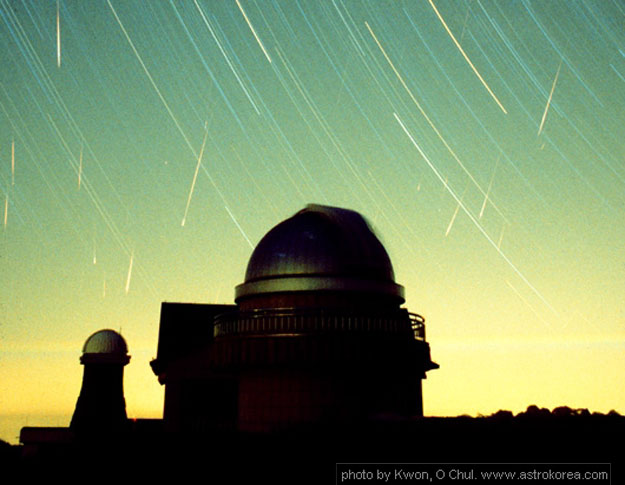Credit & Copyright: O Chul Kwon
(SoBaekSan National Observatory)
Explanation:
There were two peaks to this year's
Leonid Meteor Shower.
The first peak was best seen during the early morning hours of November 18 in
North America,
while the second peak, almost twice the intensity of the first,
occurred eight hours later and was best seen from
Asia.
Pictured above is an image of
SoBaekSan National Observatory in
Korea during the
second Leonid peak, starting at 3:50 am local time.
Visible in the background are
numerous Leonid meteors
bright enough to be seen over background light even
during the 40-minute exposure.
Local observers reported an average of over one
meteor
per second during this outburst.
Next year's Leonid Meteor Shower might be even more
intense but will have to compete will the glare of a nearly
full moon.
1999 2000 2001 2002 2003 2004 2005 2006 2007 2008 2009 2010 2011 2012 2013 2014 2015 2016 2017 2018 2019 2020 2021 2022 2023 2024 2025 |
Январь Февраль Март Апрель Май Июнь Июль Август Сентябрь Октябрь Ноябрь Декабрь |
NASA Web Site Statements, Warnings, and Disclaimers
NASA Official: Jay Norris. Specific rights apply.
A service of: LHEA at NASA / GSFC
& Michigan Tech. U.
|
Публикации с ключевыми словами:
southern sky - Comet Linear WM1 - comet - комета Linear WM 1 - кометы
Публикации со словами: southern sky - Comet Linear WM1 - comet - комета Linear WM 1 - кометы | |
См. также:
Все публикации на ту же тему >> | |
